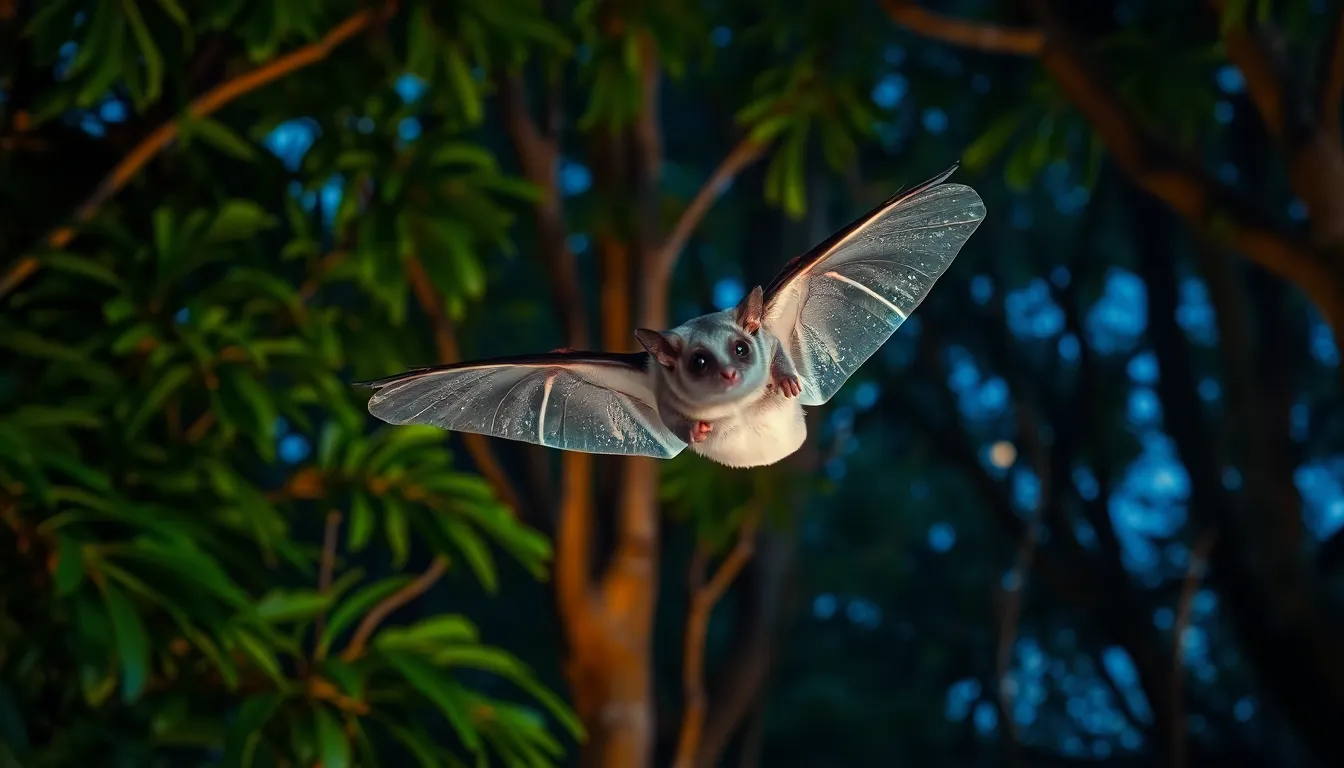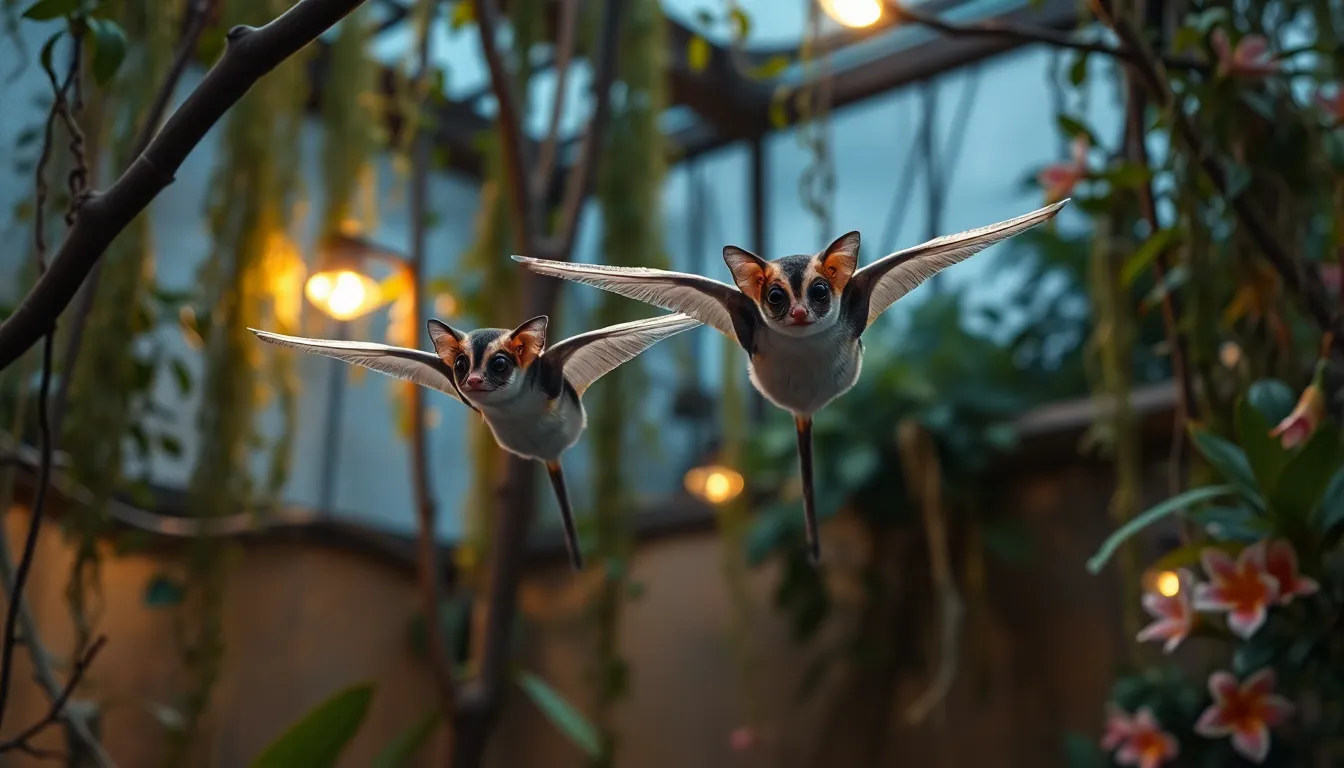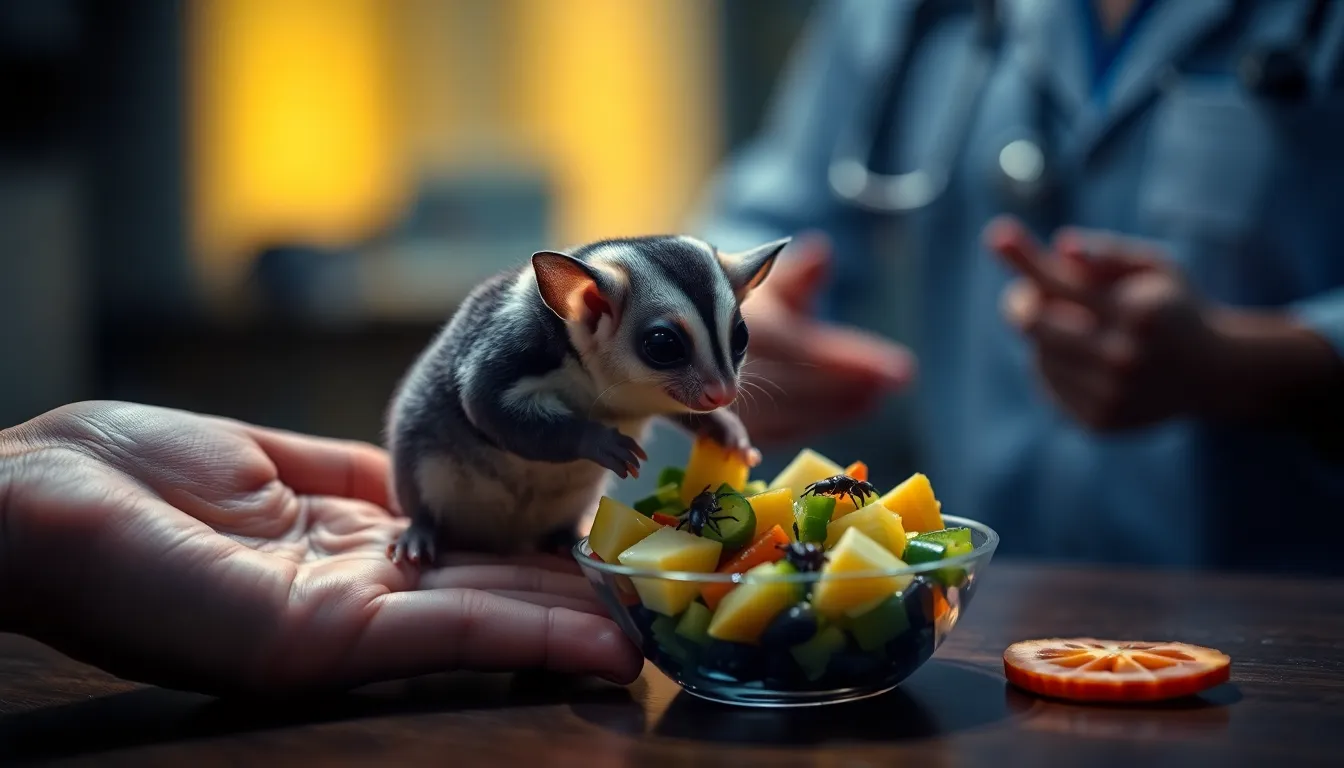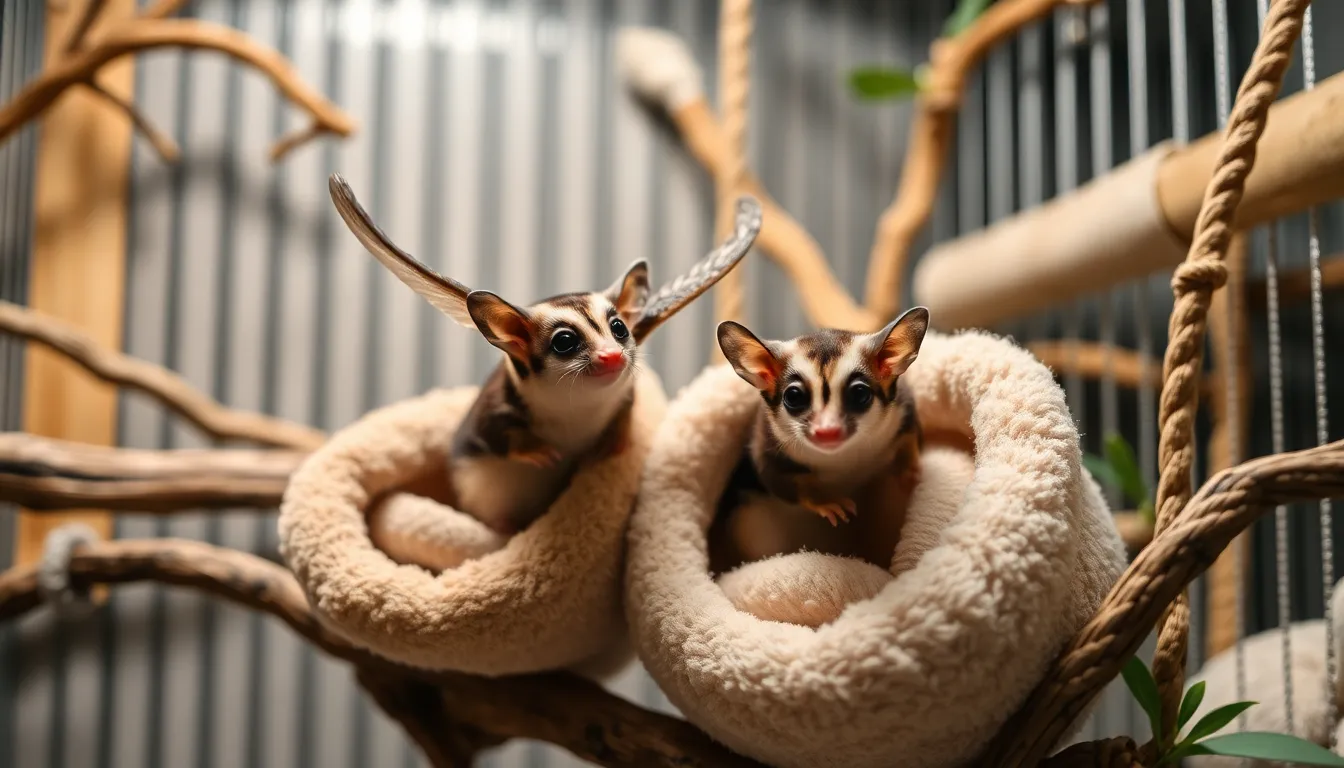Check out These Facts About Sugar Gliders as Pets” to understand the profound commitment these captivating marsupials demand. Their unique biology, complex social needs, and specialized care requirements necessitate thorough preparation for responsible ownership.
Key Implications
- Long-Term Commitment: Sugar gliders typically live 12-15 years in captivity, demanding owners provide extensive social interaction, ideally with multiple gliders, and accommodate their nocturnal nature.
- Specialized Care: Their unique dietary needs require a precise blend of formulated foods, fresh produce, and protein, as improper feeding causes severe health issues like Metabolic Bone Disease.
- Safe Environment: Owners must ensure a spacious, vertically oriented enclosure with enrichment and secure locks, prioritize strict separation from other household pets, and verify local ownership legality.

Unveiling the Marsupial Marvel: Anatomy, Movement, and Lifespan
Sugar gliders are captivating small marsupials, native to the rainforests of Australia and New Guinea. They possess unique biological features adapted for their arboreal (tree-dwelling) lifestyle. These nocturnal creatures exhibit remarkable gliding abilities and require specific care to thrive in captivity. Understanding their natural traits is crucial for responsible pet ownership.
Specialized Gliding Anatomy
A sugar glider’s most distinguishing feature is its patagium, a thin membrane of skin. This membrane extends from its wrist to its ankle on each side of its body. When a sugar glider leaps from a height, it stretches out its limbs. This action pulls the patagium taut, forming a wing-like surface. They can then glide significant distances between trees, often over 50 meters, steering with their tail and limb movements. This efficient locomotion helps them navigate their dense forest environment. Observing them in motion highlights their agility. Consider attending an exotic pet expo to see these fascinating animals up close.
Lifespan and Dietary Needs
Sugar gliders typically live 6-7 years in the wild, but can reach 10-15 years in human care with proper nutrition and environment. Their nocturnal nature means they are most active from dusk until dawn. During these hours, they forage for food. Their natural diet is omnivorous, consisting of tree sap, nectar, pollen, and insects. As pets, replicating this complex diet is essential. Their specialized dietary requirements include:
- Commercial sugar glider pellets (main base)
- Fresh fruits and vegetables (e.g., apples, sweet potato)
- Safe protein sources (e.g., cooked chicken, boiled egg)
- Nectar or specialized sugar glider formulations
Avoiding inappropriate human foods to avoid is vital for their health. Always research safe items before feeding. Providing a balanced diet ensures their longevity and well-being.

Unveiling the Marsupial Marvel: Anatomy, Movement, and Lifespan
Sugar gliders are captivating marsupials. Responsible ownership demands understanding their unique biology. These arboreal creatures thrive with specific care. An average glider lives for 12 to 15 years in captivity, requiring long-term commitment.
Essential Biological Details
Key facts for optimal care include:
- Adult body length: 5 to 6 inches
- Tail length: approximately 6 inches (aids steering)
- Typical weight: 80 to 160 grams (4 to 5.5 ounces)
- Pouch development: 60 to 70 days for joeys
- Gliding capability: up to 150 feet (via a patagium)
- Social structure: Live in colonies of up to 30 individuals
Movement, Social Needs, and Optimal Care
Sugar gliders are renowned for gliding. Their patagium enables impressive aerial maneuvers, requiring ample vertical enclosure space. They are highly social, thriving best in pairs or small groups. Companionship is crucial. Attending an exotic pet expo offers expert insights on habitat enrichment. Prioritizing proper nutrition ensures a healthy life.

The Demanding Realities of Sugar Glider Care: Social Bonds, Diet, and Health
Owning sugar gliders demands major commitment. These marsupials possess extreme social needs. They thrive best housed in same-sex pairs; solitary gliders suffer severe stress. Nocturnal habits demand owner evening interaction. Daily playtime builds strong bonds.
Demanding Dietary Needs
Crafting a suitable diet is complex. They are specialized omnivores. Improper feeding causes severe health problems. Owners must provide a prepared staple diet plus fresh items. Their daily diet must include:
- Formulated staple (BML/HPW).
- Fresh fruits, vegetables.
- Safe insects.
Many human foods are dangerous; learn more about pet food restrictions.
Health Challenges and Proactive Care
Sugar gliders face health issues from poor care. Dietary imbalances cause metabolic bone disease. Stress suppresses immunity. Regular veterinary check-ups with an exotic animal specialist are vital. An experienced vet prevents many conditions. For valuable care, consider visiting an exotic pet expo. This diligence is non-negotiable.

The Demanding Realities of Sugar Glider Care: Social Bonds, Diet, and Health
Sugar gliders are captivating pets, requiring considerable commitment. These creatures are highly social, thriving within large groups. Wild colonies often number up to 30 individuals. This strong social drive means solitary gliders quickly experience severe stress. Owners must provide at least two gliders for companionship. Adequate social interaction is crucial for their well-being. Behavioral issues frequently arise without it.
Common Sugar Glider Health Challenges
Prospective owners must grasp potential health concerns. Proactive care significantly prevents serious conditions. Here is a checklist of prevalent issues:
- Metabolic Bone Disease (MBD): Improper diet causes weak bones.
- Injuries: Active gliders risk falls; ensure safe enclosure design.
- Diarrhea: Poor diet or sudden food shifts cause digestive upset.
- Dental Disease: Inappropriate food textures lead to tooth decay.
- Parasitic Infections: Internal and external parasites impact overall health.
Recognizing these risks enables better ownership. A balanced, species-appropriate diet is paramount. Many human foods are unsafe for pets. Always check foods to avoid before feeding your glider. Regular veterinary check-ups with an exotic animal specialist are vital. Connecting with experts at an exotic pet expo offers valuable support and current information.

Essential Checks: Legality, Enclosure, and Compatibility for Potential Owners
Prospective sugar glider owners face critical responsibilities. Thorough preparation is paramount before acquiring an exotic pet. First, verify the legality of owning a sugar glider locally. Regulations vary by state and municipality. Some areas prohibit them; others demand permits. Current data shows compliance avoids severe complications. Failing to confirm legality results in fines or confiscation. Exploring local exotic pet regulations ensures a smooth start. Consider attending a pet expo for regional insights.
Optimizing Your Sugar Glider’s Enclosure
A spacious, enriching habitat is non-negotiable for sugar gliders. These arboreal marsupials demand vertical space. Their enclosure must accommodate exercise wheels, branches, and pouches. Proper environmental enrichment prevents stress. Consider these essential components:
- Large wire mesh cage (typically 24x24x36 inches for a pair)
- Multiple branches, ropes, and climbing toys
- Fleece pouches or nesting boxes for security
- Secure locks; sugar gliders are skilled escape artists
Compatibility with Other Household Pets
Housing sugar gliders separately from other pets is crucial. They are naturally prey animals. Cats or dogs are perceived as predators. Even gentle interactions cause extreme stress, leading to health issues. Sugar gliders also possess unique dietary needs. Never share food meant for other animals. Understanding dangerous pet foods is vital. Prioritize their safety and well-being always. Responsible ownership begins with these fundamental checks.

Essential Checks for Aspiring Sugar Glider Owners
Owning a sugar glider requires preparation. Confirm legality, enclosures, and compatibility for responsible ownership.
Legality, Habitat, and Social Needs
Check local regulations. Ownership laws vary; some prohibit them. Verify city and state ordinances. Exotic pet expos offer insights.
Habitat is crucial. Gliders are arboreal, needing vertical space. Wild gliders glide up to 150 feet. Enclosures facilitate this.
- Size: 3x2x3ft minimum; taller is better.
- Safety: Bar spacing ≤ 0.5 inches.
- Enrichment: Branches, ropes, pouches.
- Diet: Know foods to avoid.
Gliders are social. They thrive in pairs or groups. Solitary gliders get stressed. Accommodate nocturnal nature, daily interaction. Assess long-term commitment.
Source
Lianne McLeod, DVM (over ten years experience)
Natasha Diehl, DVM (over six years experience)
The Spruce Pets’ rigorous editorial standards
